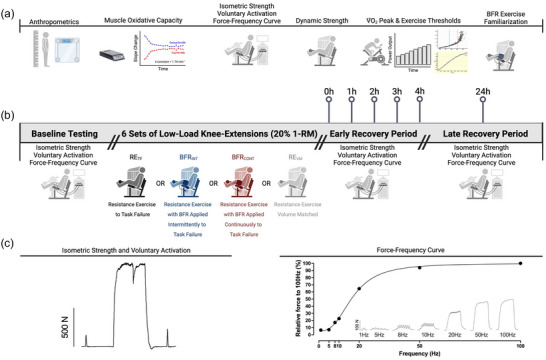FIGURE 1.

Study overview. (a) Introductory, characterization and blood flow restriction (BFR) familiarization visit. (b) Intervention visit overview with all baseline and post‐exercise neuromuscular testing. Participants performed six sets of knee‐extensions with 20% of their one repetition maximum (1‐RM) under the following conditions: low‐load resistance exercise to task failure (RETF), low‐load resistance exercise to task failure with BFR applied continuously (BFRCONT), low‐load resistance exercise to task failure with BFR applied intermittently during exercise sets (BFRINT), and low‐load resistance exercise volume matched (REVM) to the condition with the lowest total number of repetitions. (c) Representative tracing of the isometric strength and voluntary activation test (left) as well as the raw force–frequency tracings (right inset). The graph on the right represents the non‐linear regression curve fitting analysis to determine the frequency required to evoke 50% of the force output at 100 Hz. The figure was created using BioRender.com.
